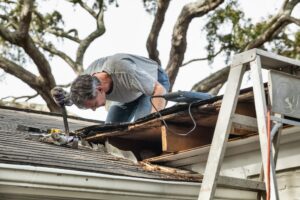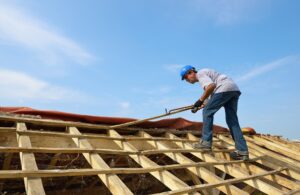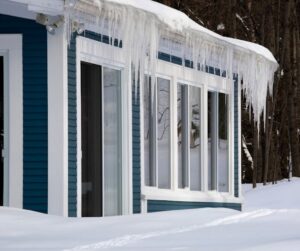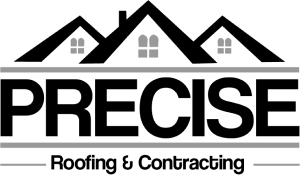Does your apartment’s roof leak? Should you put pots and pans under the leak to catch the water or do something more? If you’re not sure what to do next, take a look at the do’s and don’ts of apartment roof wear, damage, and leak repair.
Do Contact Your Landlord
More specifically — do contact your landlord immediately. While some leaks aren’t serious, any amount of water can damage your apartment and belongings or cause other issues. Failure to promptly repair a leak could result in:
- Mold growth. Not only could mold grow on visible wet patches, but it can also spread to interior parts of the walls or ceiling. This makes it difficult to detect the mold or can leave your rental with an odd odor.
- Stained paint. Repeated wet spots can change the color of ceiling or wall paint. Even though you didn’t cause the leak, your landlord may fault you for not reporting the problem before it ruined the paint. This could cost you unnecessarily or may result in the loss of a security deposit.
- Fire hazards. A roof leak can allow water to enter wall or ceiling spaces filled with electrical wiring. If your landlord doesn’t know they need to repair the leak, wet wiring could pose a serious safety issue.
- Structural issues. Over time, a leaky roof can warp or rot wood. Without a repair, this type of issue can compromise the apartment’s structural integrity.
Given the potential problems a leaky roof could cause, your landlord needs to (and likely wants to) know about the issue as soon as possible. Prompt notification gives them the chance to correct the leak in a timely manner, decreasing the risks to the apartment, their tenants, and anything inside of their property.
Don’t Attempt to Repair the Leak Yourself
A roof repair is not a do-it-yourself job — especially if you don’t own the property. Even though a plaster patch or shingle replacement may seem like the solution to this type of issue, any roof repair requires a professional fix. A DIY apartment roof repair could result in:
- Additional damage. Without experience or expertise in roof repair, you could damage other areas of the roof or make the problem worse. Not only could this put the roof and everything in the apartment at risk, but it could also cost you in extra charges from your landlord.
- Safety risks. A pitched, slippery, or steep roof requires proper safety steps to repair. Without adequate risk-reducing measures, you could slip and fall. This puts you in physical jeopardy and could result in costs or insurance issues for your landlord.
- Issues with your landlord. Does your lease specify how to handle damage or wear in or outside of your apartment? An attempted DIY repair could violate the terms of your lease or leave your landlord angry about a failed fix.
Again, any leak requires a quick call to your landlord. Never assume you know why the roof is leaking, where the leak is coming from, or how to stop it. The property owner needs immediate knowledge of any problem. This gives the landlord the chance to evaluate the issue and decide what to do next.
Do Ask the Landlord about Next Steps
If you’ve called the landlord to alert them about the leak, what should you do next? The next steps to take could include:
- Wait for the roof contractor. Even though you may want the repair made immediately, you’ll need to wait for the roofer to arrive for a complete repair.
- Use buckets or pots. While buckets, pots, and pans aren’t final fixes, you can collect leaking water with these containers as you wait for the roofer.
- Explain the issue. Will the landlord come over to meet the roofer? If not, you’ll need to explain the issue to the contractor.
After the roofer arrives, make sure they have space to work. You may need to move interior or exterior furniture and other items to give them full access.
Do you have a leaky roof? Contact Precise Roofing & Contracting for more information.





